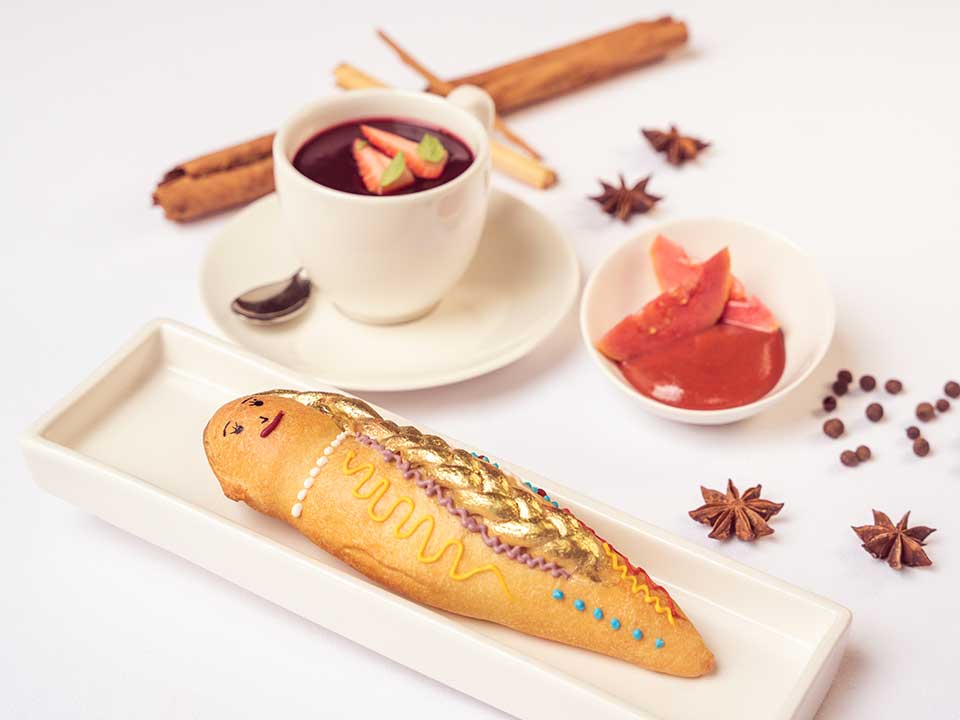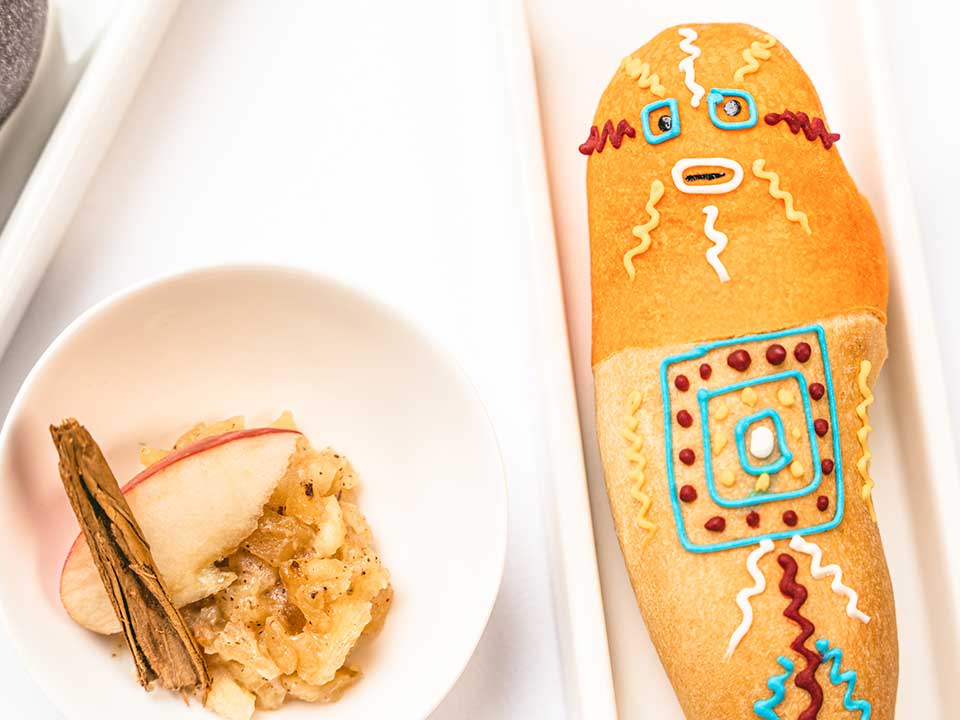As is the case for all of its artistic and religious traditions, the Day of the Dead offers visitors a blend of Quito’s pre-colonial indigenous customs and Spanish colonial influence. Celebrated each year on November 2, this is a day on which people of all social classes throughout the country remember their ancestors and pay their respects to the deceased while sharing family history with their children and ensuring that knowledge of their past is passed down to future generations. The holiday started out as an indigenous celebration of life, in a culture that believes to this day that death should be commemorated with festivities because those who die simply pass on to a better existence and should be accompanied on their journey by friends, family, food, and spirit.
Each year, when November 2nd rolls around, families gather around the graves of their loved ones and enjoy a graveside picnic of colada morada and guaguas de pan. The preparation of these ritual foods has traditionally been a family event in and of itself. Women sit around communal tables preparing the ingredients and reminiscing about their loved ones. Recipes for colada morada – a thick, deep purple beverage originally made of purple-corn, Andean blueberries (mortiño), and other native grains, root vegetables, and fruits – have been passed down from generation to generation. Colonial influences added the sweetness of sugar cane (panela) and the occasional use of corn starch to thicken the concoction during this arduous, yet rewarding, day-long process. Most versions also include pieces of regional fruits (strawberries, babaco, golden gooseberries, and others) that are cut up and added to the beverage in the final stages of its preparation. The purple color denotes mourning.
The guaguas de pan (bread dolls) represent a more recent addition to the tradition, as wheat flour did not form a part of the Andean diet until the Colonial period. Forming and decorating the dolls is a favorite activity for children in many households and each one adds a different touch by filling the dolls with mixtures that range from sweet (guava paste, blackberry jam, figs, chocolate, or dulce de leche) to savory (cheese or pumpkin purée). These are then decorated with colorful icing.
TALK TO A DESTINATION EXPERT

Diego Zapata

Rosa Mena

Sandy Lara

Diego Zapata

Rosa Mena

Sandy Lara
For those who prefer to remember their ancestors in a more intimate way, the holiday offers the perfect opportunity to invite friends over to one’s home to share a bowl or cup of colada morada with a guagua while debating over the merits of each one’s recipe. Our gastronomic director, Byron Rivera, breaks his silence over his secret recipe to share it with you here. Get together with your family and friends and enjoy this delicious Ecuadorian tradition!
Colada Morada Recipe

INGREDIENTS:
- 4 l water
- 250 gr purple corn flour
- 500 gr blueberries (mortiño)
- 250 gr blackberries (mora)
- 1 fresh pineapple, cut into small cubes
- 8 naranjillas
- 1 lb strawberries, cut into small pieces
- 1 babaco, cut into small pieces
- 5 cloves
- 5 ishpingos
- 4 cinnamon sticks
- 2 Cups sugar
- 2 orange leaves
- Allspice
- Fresh or dried lemongrass
- Dehydrated cane sugar (panela) or white sugar to taste
Preparation:
STEP 1:
In a pot, boil 4 liters of water with the spices: cloves, cinnamon, ishpingo, allspice, orange leaves and lemongrass. After it has reached a boil, strain and reserve the liquid.
STEP 2:
Cook the purple corn flour after soaking it in 300 ml of water.
STEP 3:
In another pot, cook the pieces of fruit (pineapple, strawberry and babaco) with sugar and then allow to rest at room temperature.
STEP 4:
Blend the blueberries, naranjilla and blackberries with no water or just enough to facilitate blending. Strain and reserve the juice.
STEP 5:
To the herb and spice-flavored water prepared in STEP 1, add the juice of STEP 4 made from blueberries, naranjilla and blackberries. Cook over a low flame, stirring constantly with a wooden spoon. Slowly add the cooked purple corn flour and stir. Boil until the mixture thickens, stirring constantly. Then, turn off the heat, stir in the fruits from STEP 3, and add dehydrated cane sugar (panela) or white sugar to taste.
Recipe for 20 servings.

Javier Garcia

Eduardo Silva

Carolina Escobar
START PLANNING YOUR TRIP

Javier Garcia

Eduardo Silva

Carolina Escobar
Get in touch for more
CONTACT US



